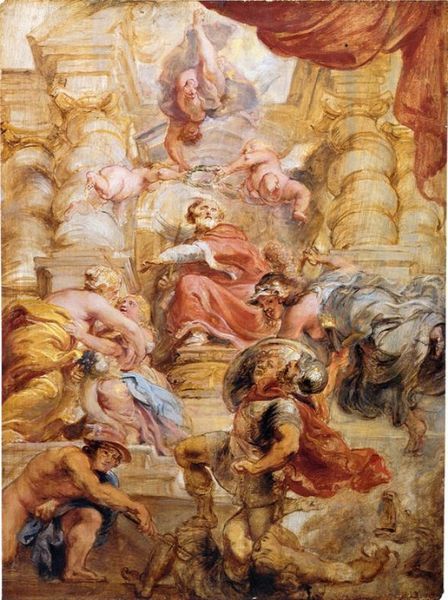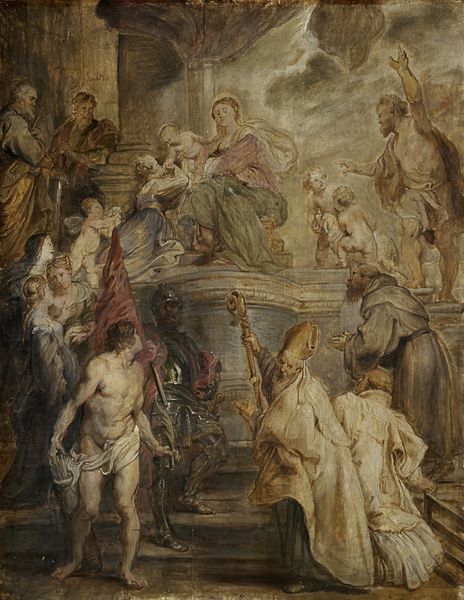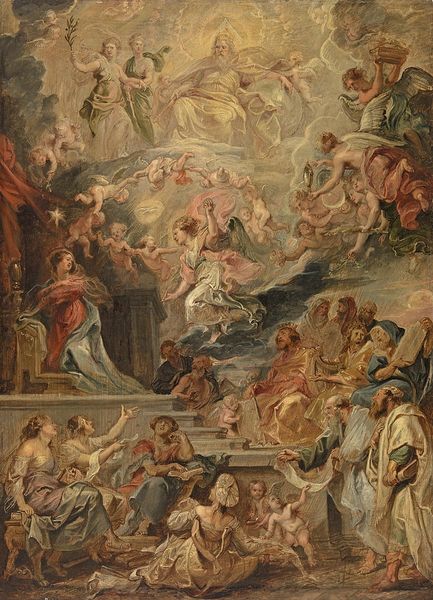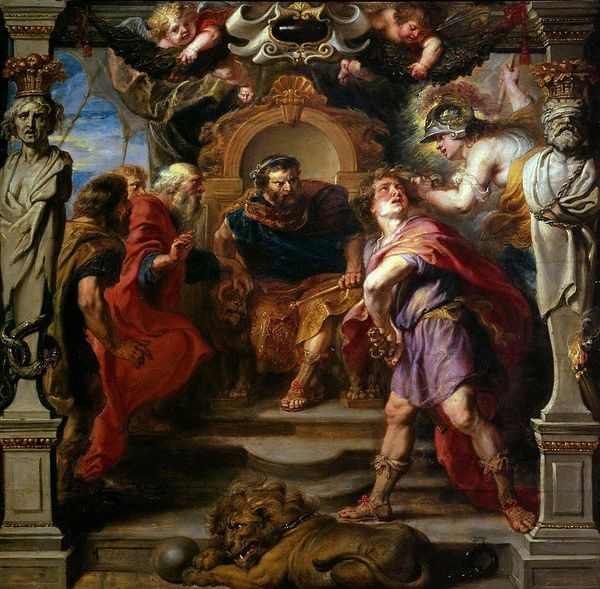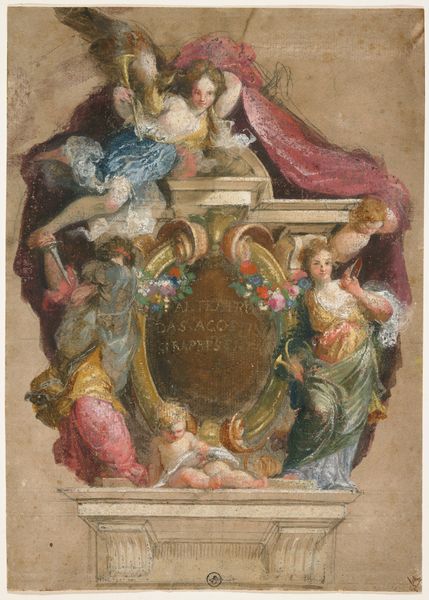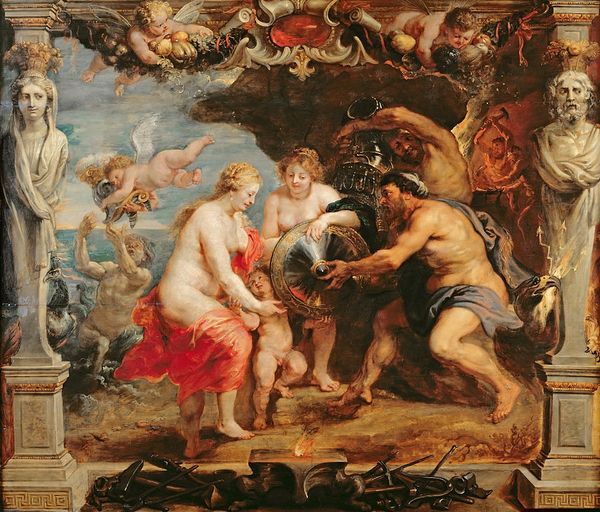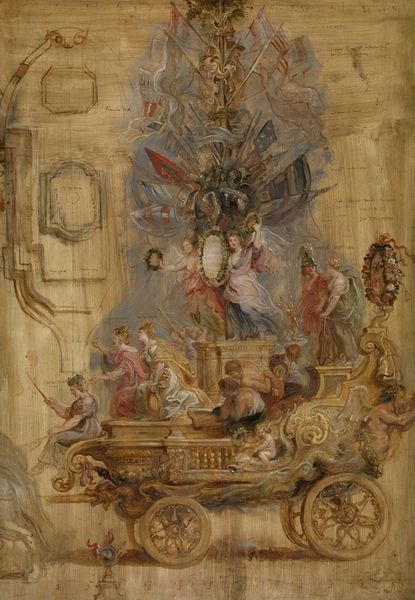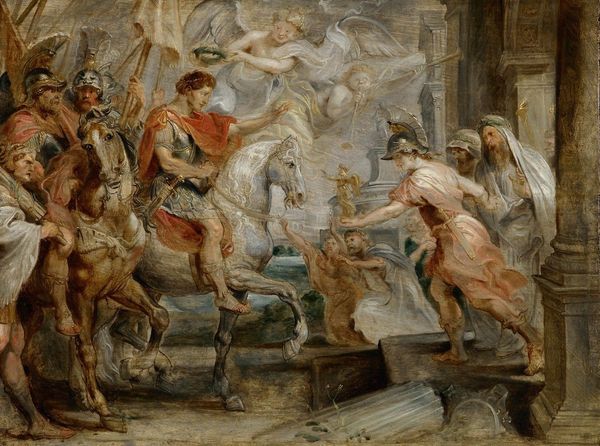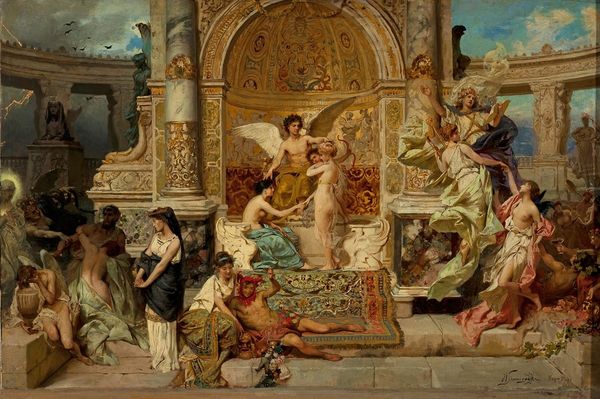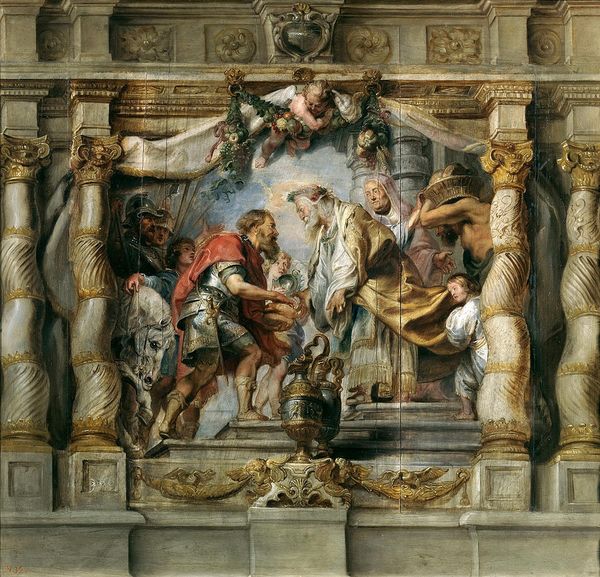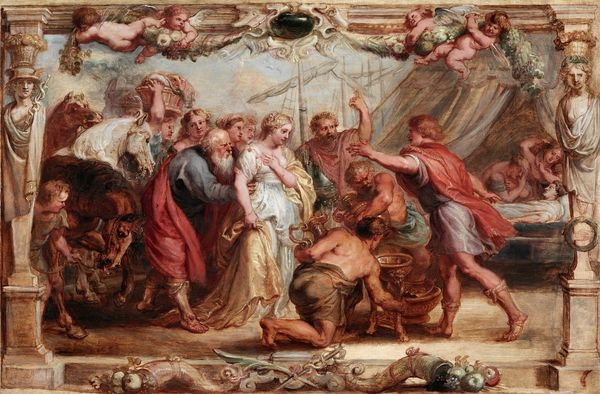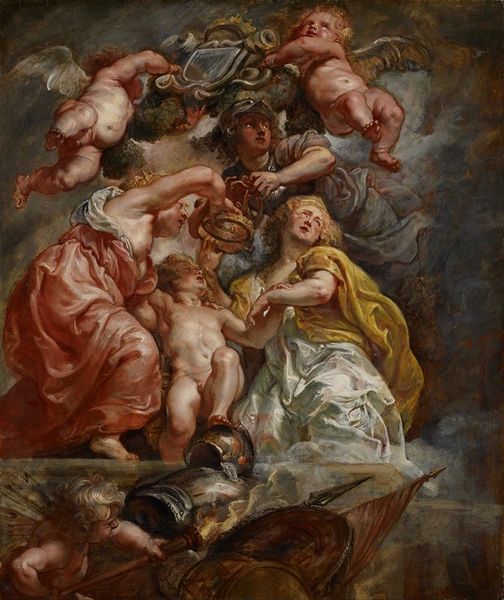
painting, oil-paint
#
allegory
#
narrative-art
#
baroque
#
painting
#
oil-paint
#
figuration
#
oil painting
#
group-portraits
#
flemish
#
mythology
#
painting painterly
#
history-painting
Copyright: Public Domain: Artvee
Editor: This is Peter Paul Rubens’s *The Wrath of Achilles*, created around 1630 to 1635. It’s an oil painting and the composition feels quite dynamic, with lots of figures and swirling energy. What can you tell us about how to interpret all the symbolic imagery? Curator: Well, what jumps out at you when you consider "wrath" and Achilles in visual terms here? Notice the figures around Achilles. Who are they, and how do they function within this idea of wrath? It is worth looking for clues in their gestures. Editor: I see that the figure who might be Achilles seems very agitated, almost pushed forward by some of the others. It also looks like a goddess in the background is reaching to stop him? Curator: Precisely. Now consider, what do those figures represent, and how do they contribute to our understanding of wrath beyond just simple anger? Do they offer any tempering elements? Think about wrath as a psychological state with long-lasting cultural and historical implications. Editor: So, it is not simply just about individual rage, but a whole cultural narrative, about the consequences of fury? Curator: Exactly. Think about how wrath, represented visually here, becomes a historical or even an allegorical concept. We are prompted to meditate on how wrath influences events far beyond a single person. Achilles becomes a symbol for that kind of destructive force. Notice that even the cherubs appear frightened. Rubens links individual emotionality with its echoing social ramifications. Editor: That is helpful to think of it not just as anger, but its larger ripples of consequence, what follows the feeling. Curator: Absolutely. It reveals how the choices and behaviors of key people in the classical world become codified as memorable symbols over centuries.
Comments
No comments
Be the first to comment and join the conversation on the ultimate creative platform.
